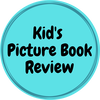|
Writing a children’s book is a magical journey that allows authors to spark imagination and inspire young minds. However, embarking on this adventure can sometimes feel overwhelming without a clear roadmap. That’s where a children’s book template comes in handy. In this blog post, we’ll explore the essential steps to creating a template that will guide you through the process of crafting your own captivating children’s story. Understanding Your AudienceBefore diving into the writing process, it’s crucial to understand your audience – children. Consider the age group you’re targeting, their interests, and developmental stage. Research popular children’s literature and familiarize yourself with themes and styles that resonate with young readers. Defining Your Message and ThemeEvery great children’s book carries a message or theme that leaves a lasting impression. Take time to brainstorm and define the central idea you want to convey. Whether it’s about friendship, courage, or imagination, ensure your message is clear and age-appropriate. Creating Memorable CharactersCharacters are the heart and soul of any children’s book. Develop relatable and dynamic characters that children can connect with. Consider their personalities, motivations, and growth throughout the story. Aim to create characters that inspire empathy and curiosity. Structuring Your StoryA well-structured story is essential for keeping young readers engaged from beginning to end. Outline the key components of your story, including the introduction, rising action, climax, and resolution. Keep the plot simple yet compelling, with clear progression and pacing. Crafting Engaging Dialogue and NarrationChildren are drawn to vibrant language and playful storytelling. Write dialogue and narration that capture their attention and ignite their imagination. Use age-appropriate language and incorporate elements like repetition, humor, and sensory imagery to make your story come alive. Incorporating IllustrationsVisual elements play a crucial role in children’s books, enhancing the reading experience and complementing the text. Collaborate with an illustrator or create your own illustrations that align with the tone and style of your story. Ensure that the illustrations support and enrich the narrative. Reviewing and Revising Your TemplateOnce you’ve crafted your children’s book template, it’s time to review and revise. Seek feedback from beta readers or fellow writers to identify areas for improvement. Refine your template to ensure coherence, readability, and resonance with your target audience. Creating a children’s book template is an essential step in the writing process, providing a roadmap for crafting a captivating story that resonates with young readers. By understanding your audience, defining your message, and honing your storytelling skills, you can embark on a magical journey of creativity and imagination. So, roll up your sleeves, unleash your inner child, and let the storytelling begin! Writing a Children’s Book Template [Free] Title: [Enter Your Book Title Here]
1. Introduction:
0 Comments
Your comment will be posted after it is approved.
Leave a Reply. |
Categories
All
Archives
May 2024
|


 RSS Feed
RSS Feed